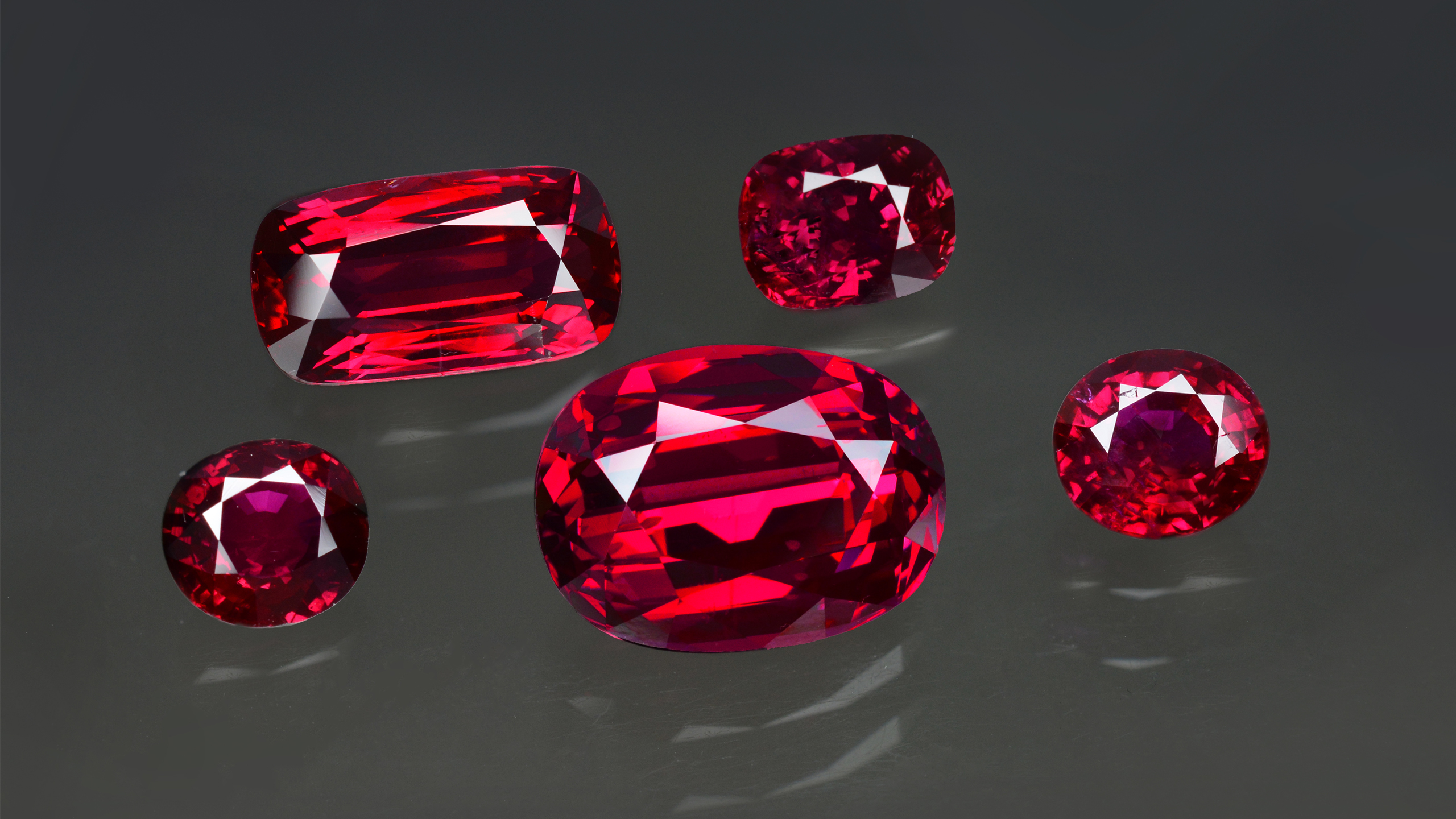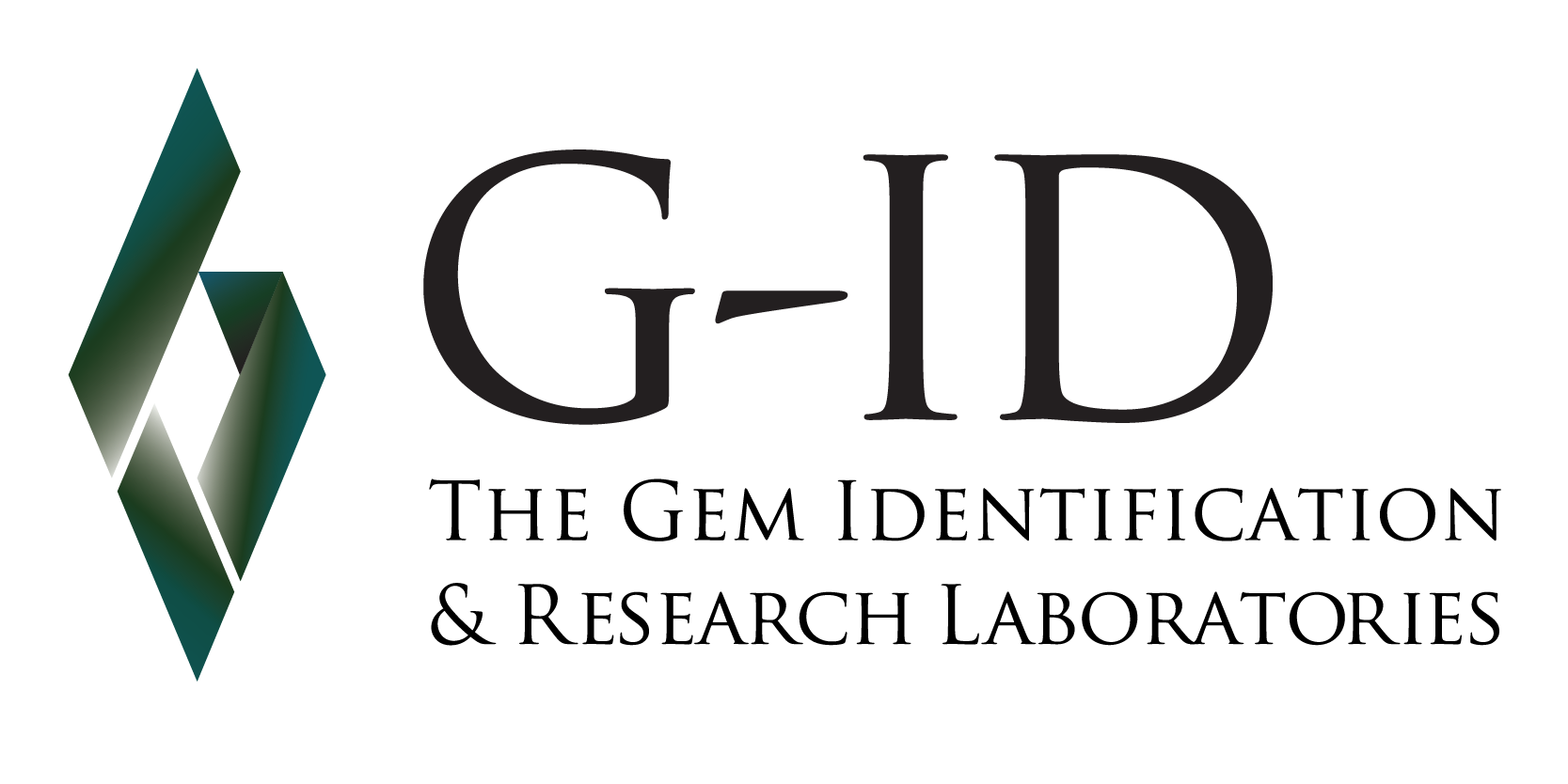Research Article
Feature Article
The Journal of Gemmology, 2016, Vol. 35, No. 2
By Tasnara Sripoonjan, Bhuwadol Wanthanachaisaeng and Thanong Leelawatanasuk
2016, July 10

Figure 1: Mozambique has emerged asan important ruby source, as shown bythese untreated stones (1.02–5.93 ct).Photo by T. Sripoonjan.
In the past several years, Mozambique has emerged as one of the world’s most important sources of ruby, and unheated stones from this country are in particularly strong demand. Nevertheless, it is common for these rubies to undergo low-temperature heating (~1,000°C or below) to slightly improve their colour. The treated stones may show very subtle or no alteration of internal features (e.g. mineral inclusions, ‘fingerprints’, needles, ‘silk’, etc.). However, ‘iron-stained’ surface-reaching fractures in the rubies commonly display a noticeably more intense colour after heating. Raman and FTIR spectroscopy were used to document a transition from goethite to hematite within stained fractures in samples heated to 500°C and 600°C. The identification of hematite within such fractures provides key evidence for the low-temperature heat treatment of Mozambique ruby.
Please wait while flipbook is loading. For more related info, FAQs and issues please refer to DearFlip WordPress Flipbook Plugin Help documentation.
1. The Gem and Jewelry Institute of Thailand (GIT), Bangkok, 10500 Thailand
2. College of Creative Industry, Srinakarinwirot University, Bangkok, 10110 Thailand
Be First to know about new activities and more
©2023 G-ID Laboratories - All Rights Reserved.
